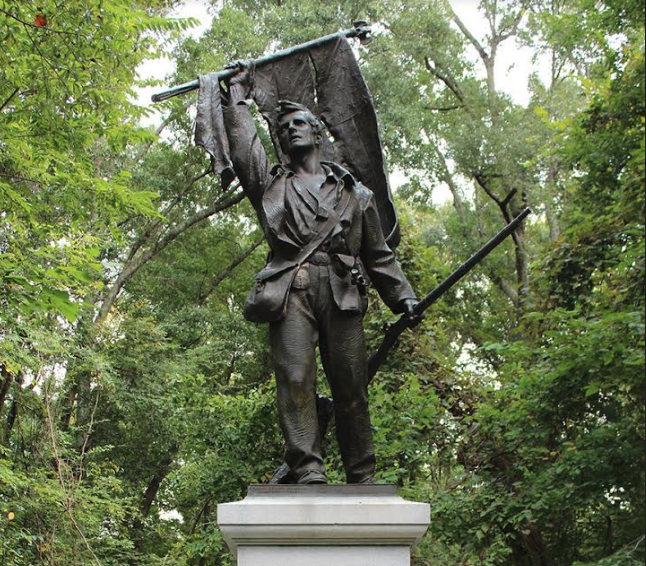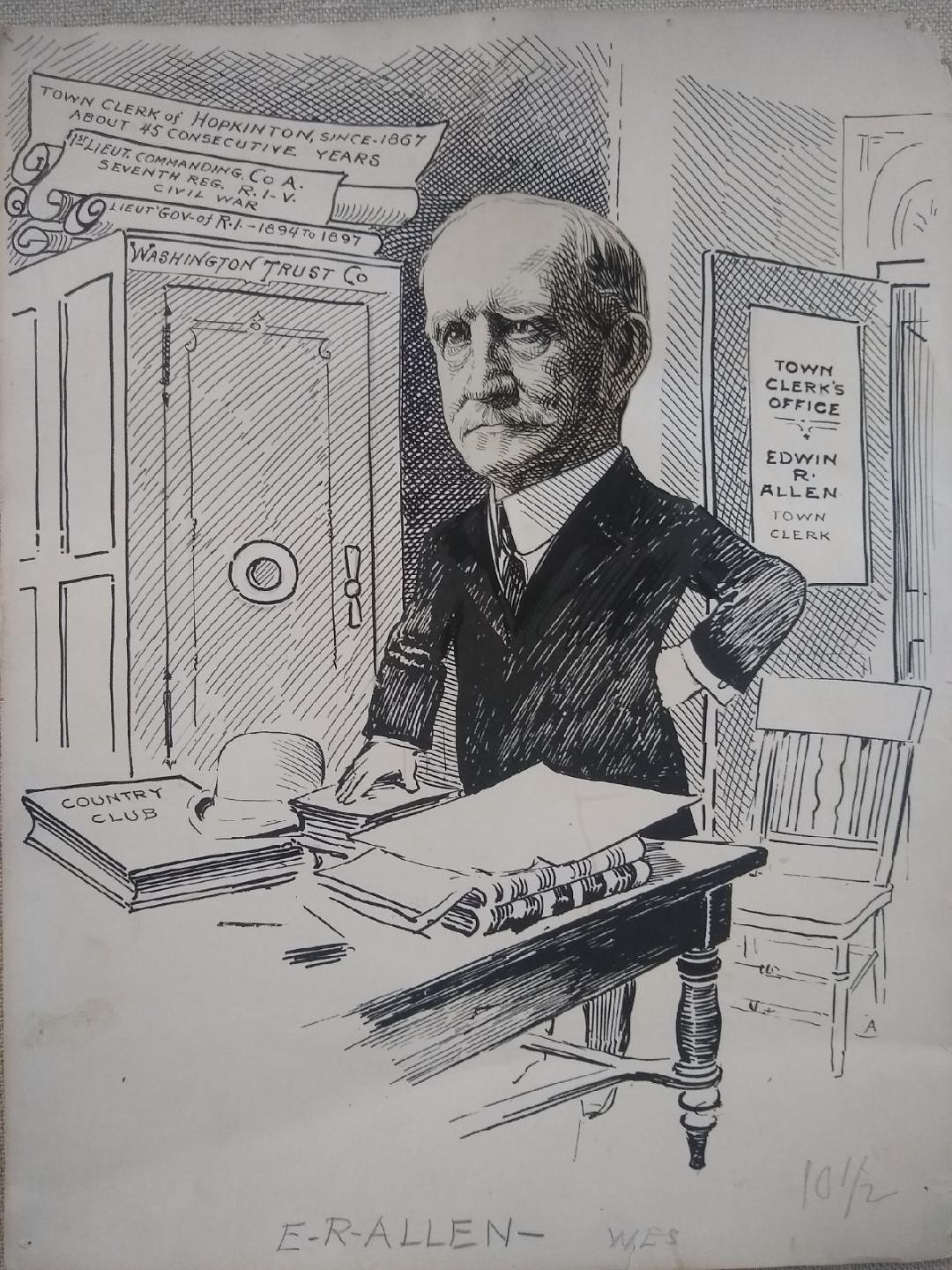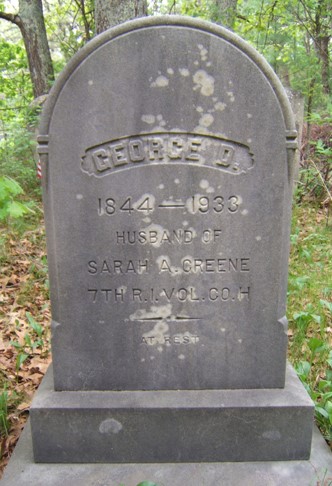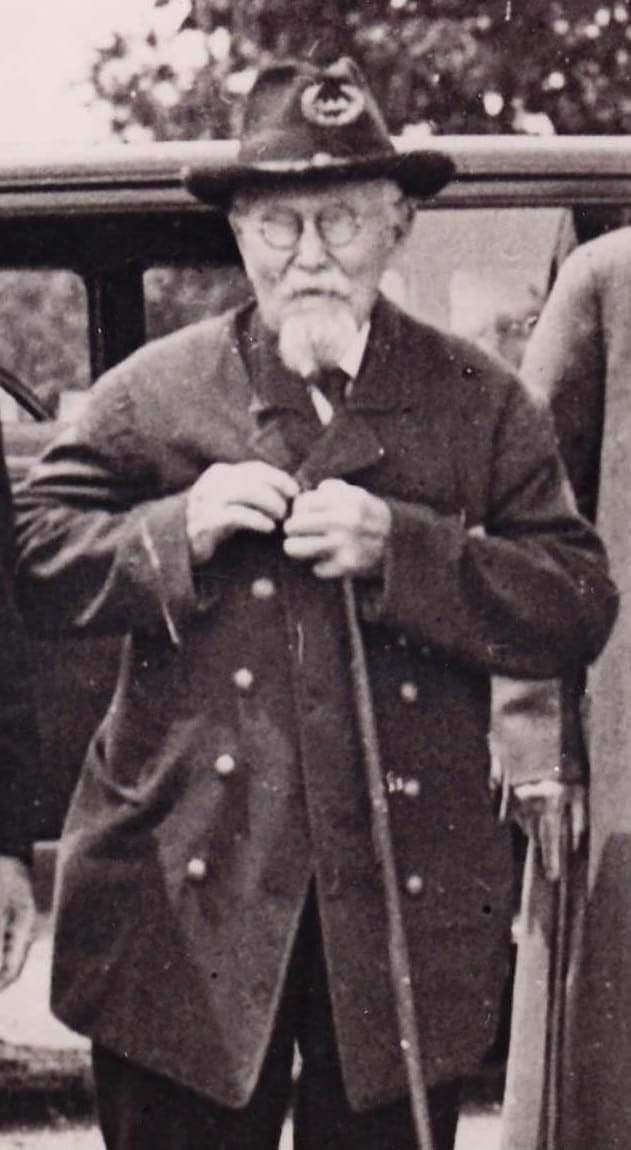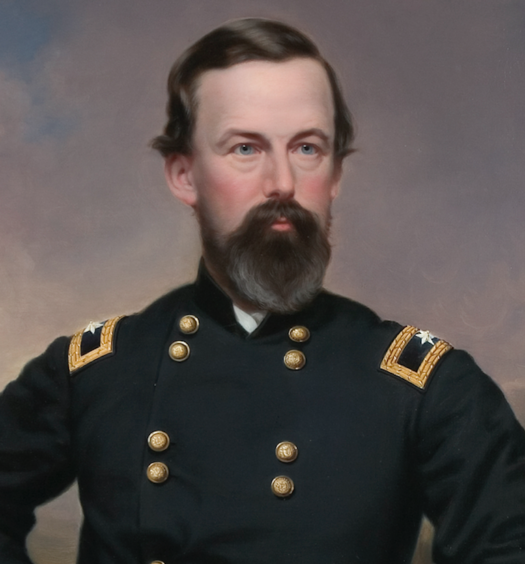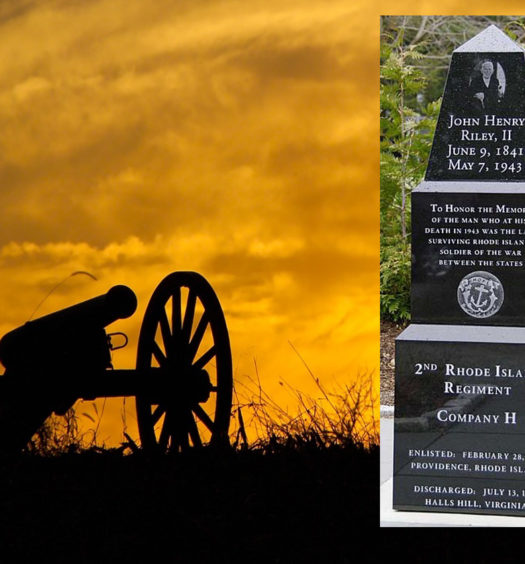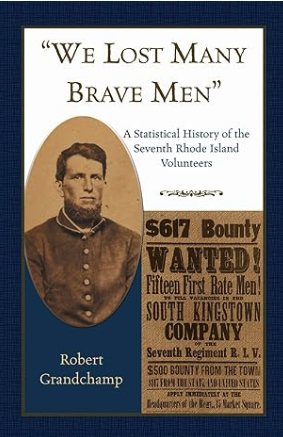There is something special in being last, especially when it comes to being the last survivor of a particular event. From Millvina Dean, the last survivor of the Titanic to John Glenn, the final surviving Mercury 7 astronaut, when the terminating participant in an important event takes his or her last breath, the living memory of that event ceases forever. Indeed, as I write this, I am witnessing the final passing of the Greatest Generation and feel proud to have personally known men who fought in the jungles of the South Pacific and stormed the beaches of Normandy.
So it was with the passing of the Civil War generation, the men who fought so bravely to restore the Union and free the enslaved. As a historian, I have often wished to have just ten minutes with one of those men to hear the incredible stories he could tell. Of course, it will never happen and most of what I have to work with is the soldiers’ writings they left behind.
There is something noble in being one of the last of these men, a survivor of survivors. This article will chronicle the final dozen surviving veterans of the Seventh Rhode Island Volunteers.[1]
All of the last survivors passed away in the 1930s, living into their late eighties or into their nineties. They began their lives in an age when few ever left the town in which they were born and lived into the age when airplane travel was beginning to blossom. They entered the military service where men still fought shoulder to shoulder with muzzle loading firearms and lived to the rise of blitzkrieg with roaring tanks and dive bombers.
These were also the last of the Seventh’s men to take part in the glorious yet fruitless assault against Mayre’s Heights at Fredericksburg. These were the men who survived untold horrors from disease in Mississippi. They took part in the grueling carnage of the Wilderness, Spotsylvania Court House, the North Anna, Bethesda Church, Petersburg, the Crater, and Poplar Spring Church. They were the fortunate few who survived to see war’s end in April 1865.
Nearly 1,200 men served in the Seventh Rhode Island Volunteers during the Civil War. This number includes the original members of the regiment mustered into service in September 1862, a few recruits added along the way, as well as the veterans of the Fourth Rhode Island who were transferred into the Seventh in October 1864. Along the way, 243 officers and men died serving in the Seventh, by far the highest losses among any Rhode Island infantry regiment during the war.[2]
For the men who were mustered out of the service, the Civil War became the most important event of their life. These men knew from the beginning in leaving their farms, workshops, and mills that they had taken part in making history. The war, however, never left them, and changed them and those who knew them in profound ways. One of the greatest Civil War historians of the twentieth historian and himself a World War I veteran, Bruce Catton, recalled growing up in Michigan with Civil War veterans:
The old men, simply because they were veterans of the Civil War, gave a color and a tone, not merely to our village life, but to the concept of life with which we grew up. They seemed to speak for a certainty, for an assured viewpoint, for the standard of values that did not fluctuate, that put such things as bravery, patriotism, confidence in the progress of the human race, and the belief in a broadening freedom for all men, at the very basis of what men moved by. That faith, in those days, was a very strong thing.[3]
Although many of the men put the war behind them, never speaking of it, and never joining any veterans association, some did and carried the burden for the rest of their lives in remembering fallen comrades and writing history for posterity.[4]
Of the men who survived from the Seventh, only a surprising few took part in veterans organizations. Of all the regiments sent to the war from Rhode Island, the men of the Seventh truly survived hell time and again, and it is not surprising that many chose to put the war to the back of their minds and not take part in veteran events or organizations.
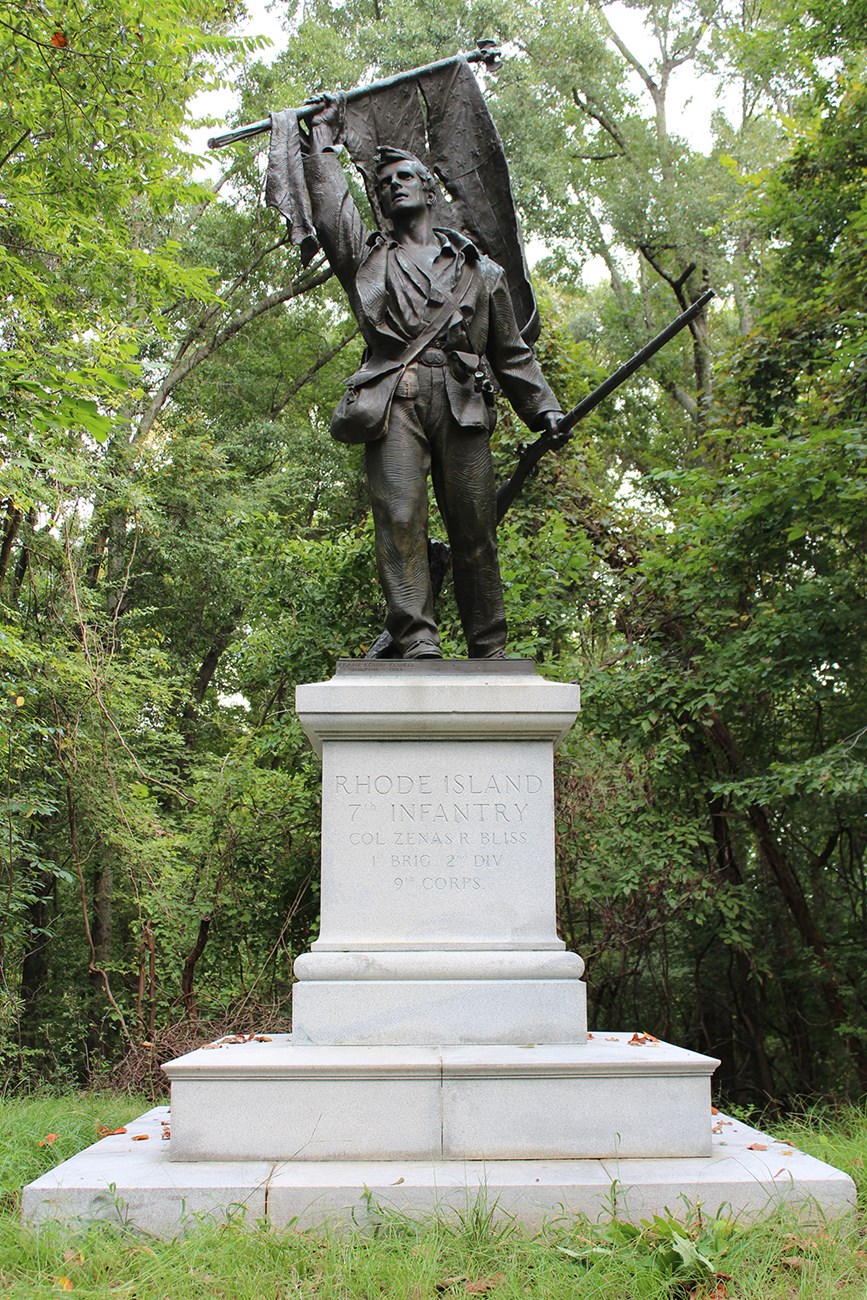
The Rhode Island Monument commemorates the service and sacrifice of the Seventh Rhode Island Infantry Regiment during the Vicksburg Campaign. The sculpture and bronze caste were finished at Gorham Manufacturing Company of Providence in 1908. Vicksburg National Military Park, Grant Avenue, in Vicksburg, Mississippi (National Park Service)
The Seventh Rhode Island Veteran Association was formed in 1873 for the purpose of remembering the regiment and building fraternal ties among the members. In the forty-eight-year existence of the organization numerous things were accomplished to remember the Seventh for posterity during their twice-yearly meetings. In 1903, the organization published a regimental history and in 1908 a monument was dedicated in Vicksburg, Mississippi. An exceptionally well-run organization thanks to long serving secretary William P. Hopkins, only 150 veterans of the Seventh were ever members of their regimental veterans association and at most the best attended reunion had fifty members present. On December 13, 1921 six aged veterans of the Seventh met for the final time in Providence. The Seventh Veteran Association was never formally disbanded, rather the old soldiers simply faded away.[5]
As the world entered the 1930s and the Great Depression, the few surviving Union veterans became almost precious relics, a direct living link to America’s Civil War past. The most important event of the year for Union veterans, Memorial Day, was passed to a new generation to organize and plan: World War I veterans. When in previous decades dozens of members of the Grand Army of the Republic, the primary Union veterans group, paraded in the streets of Providence and elsewhere in Rhode Island to place “the choicest flowers of springtime” upon the graves of the fallen, now fewer and fewer old men came each year. Indeed, each passing of a Rhode Island Civil War veteran literally became frontpage news.[6]
Here are the final dozen surviving veterans of the Seventh Rhode Island Volunteers and a short summary of each man’s life and service.
- Edwin R. Allen. Mustered out as first lieutenant of Company A, the last surviving commissioned officer of the Seventh. After the war he was the long-time town clerk of Hopkinton and served two terms as Rhode Island lieutenant governor. Lieutenant Allen was one of the few officers of the Seventh to join the Military Order of the Loyal Legion, a veteran organization only for commissioned officers. He died May 4, 1931, and was interred at Pine Grove Cemetery in Hopkinton.[7]
- James H. Lacey. A resident of Burrillville, he initially enlisted in Company D of the Fourth Rhode Island in August 1861 and fought with the Fourth at New Bern, Fort Macon, South Mountain, Antietam, Fredericksburg, Suffolk, and the Crater. He reenlisted and like his other comrades in the Fourth, Lacey was transferred to the Seventh in October 1864, being assigned to Company G. Mustered out on July 13, 1865, he returned to Burrillville and died August 23, 1931. He was interred at St. Patrick’s Cemetery in Burrillville.[8]
- Charles E. Dennis. He enlisted as a seventeen-year-old corporal from Providence and served on the color guard until he became severely ill in Mississippi. He recovered and returned to his company. Despite his sickness, he survived to be mustered out on June 9, 1865. He returned to Providence and worked as a railroad conductor. A member of Companies B and C, he died on March 17, 1932. Surprisingly, his death certificate did not mention his military service in the Seventh. Corporal Dennis was buried at Locust Grove Cemetery in Providence.[9]
- Alfred Lovely. One of the few non-Rhode Island recruits to join the Seventh, he was a native of “Canada West,” now known as Ontario, and enlisted from Providence in August 1864 into Company H. Lovely later moved to Putnam, Connecticut, where he died March 27, 1932 and is interred at St. Mary’s Cemetery in Putnam.
- George D. Greene. A member of Company H, he enlisted from Warwick and later moved to Coventry. He was one of three members of the regiment captured at Fredericksburg. He was quickly released and took part in the rest of the Seventh’s campaigns. After the war he worked as a moulder and proudly raised lemon trees at his home. He was a member of McGregor Post #14 of the Grand Army of the Republic. Greene died March 21, 1933, and is interred at Large Maple Root Cemetery in Coventry.[10]
- George T. Browning. A Narragansett Indian, he was a resident of Hopkinton and served in Company H. He was shot in the hand on June 3, 1864 at Bethesda Church, Virginia. After the war, Browning moved to Montana where he worked in the shipping business. Active in his local Grand Army Post, Browning passed away at “the ripe old age of 93” on November 7, 1933. He is interred at Sunset Hills Cemetery in Bozeman, Montana.[11]
- Joseph A. Boss. He served in Company G from South Kingstown as a private and died March 9, 1934. It is quite amazing he lived so long, considering a third of his company died in the war. When he passed, military services were performed by the local Veterans of Foreign Wars Post, while the Coast Guard station at Point Judith provided the firing party. He is buried at Riverside Cemetery in South Kingstown.[12]
- Francis B. Holland. A lifelong resident of South Kingstown, he served as a drummer in Company G. Returning home to Wakefield, he became a master carpenter, working throughout South County. He was very active in veterans activities in South County and frequently performed Civil War music at reunions and parades. He died March 19, 1934, and is buried at Oak Dell Cemetery in South Kingstown.[13]
- Marcus M. Brown. A resident of Burrillville, he enlisted into Company D and served throughout the war. Like many veterans, his health was destroyed by his military service. In 1891 he moved into the Rhode Island Veterans Home in Bristol, suffering from rheumatism. Still, he lived for many years and was one of the last Civil War veterans living there. He died May 14, 1934, and is buried in the Soldiers Plot at North Burial Ground in Bristol.[14]
- George G. Waterman. Originally a member of Company B of the Fourth Rhode Island Volunteers, he enlisted into the Fourth from Johnston on July 25, 1864. Three months later he was transferred to Company B of the Seventh. Waterman went to the last muster on July 26, 1936, and was buried at Lakeside-Carpenter Cemetery in East Providence. The consolidation of the Fourth and Seventh Rhode Island regiments in October 1864 was not a pleasant experience for the veterans of the Fourth who felt the consolidated regiment should have carried on with the name of the Fourth Rhode Island. As such, Waterman’s headstone, like nearly every other veteran of the Fourth denotes his service in the Fourth Rhode Island, rather than the Seventh.[15]
- Charles H. Holdridge. He was a remarkable survivor from Hopkinton who served in Company A. He was wounded in the head at Fredericksburg and was discharged for disability. The last veteran of Hancock Post in Pawcatuck, he was also the last surviving original member of the Seventh. Taps sounded for Private Holdridge on April 10, 1937, and he was buried at Oak Grove Cemetery in Hopkinton with full military honors rendered by the Rhode Island National Guard.[16]
- Elisha R. Watson. A lifelong Coventry resident, he was a member of Company G of the Seventh and Company D of the Fourth. He had been captured at the Crater and when released in April 1865 joined the Seventh, mustering out on July 13, 1865. After the war he was very active in both the Fourth and Seventh Rhode Island Veterans Associations, as well as McGregor Post of the Grand Army of the Republic. Until 1938, Watson made a fifty-mile pilgrimage each spring through the Pawtuxet Valley flagging the graves of over 300 of his comrades. The final survivor of both regiments, he died April 20, 1939, and is buried at Knotty Oak Cemetery in Coventry.[17]
Notes:
[1] For an excellent account of the final Civil War veterans, see Jay S. Hoar, New England’s Last Civil War Veterans (Arlington, TX: Seacliff Press, 1976). [2] For the history of the Seventh, including detailed biographies of many members, see William P. Hopkins, The Seventh Regiment Rhode Island Volunteers in the Civil War 1862-1865 (Providence: Snow & Farnum, 1903). [3] Bruce Catton, Reflections on the Civil War (New York: Bantam Doubleday, 1981), xv-xvii. [4] Clarence M. Webster, Town Meeting Country (Binghamton: Vail-Ballou Press, 1945), 138-139. [5] Papers of the Seventh Rhode Island Veteran Association, Robert Grandchamp Collection. [6] Providence Journal, May 30, 1936 and 1938; Richard Serrano, Last of the Blue and Gray: Old Men, Stolen Glory, and the Mystery that Outlived the Civil War (Washington, DC: Smithsonian Books, 2013), 1-5. [7] Westerly Sun, May 5, 1931. Hopkins, Seventh Rhode Island, 358-359. [8] Hopkins, Seventh Rhode Island, 498; Certificate of Death, James H. Lacey, August 23, 1931, Burrillville Town Hall, Burrillville, RI; https://www.findagrave.com/memorial/101007690/james-h-lacey. [9] Hopkins, Seventh Rhode Island, 290: 440; Certificate of Death, Charles E. Dennis, March 17, 1932, Providence City Hall, Providence, RI. [10] Pawtuxet Valley Daily Times, March 22, 1933. [11] Bozeman Courier (Bozeman, Montana), November 9, 1933. I am indebted to Rachel Pierce for finding additional information on Browning and for providing an image of him. [12] Narragansett Times, March 16, 1934. [13] Ibid., March 23, 1934. [14] Seventh Annual Report of the State Board of Soldiers’ Relief, Presented to the General Assembly at its January Session, 1896 (Providence: E.L. Freeman, 1896), 27; https://www.findagrave.com/memorial/185288075/marcus-m-brown. [15] George G. Waterman, United States Headstone Application for U.S. Military Veteran, July 31, 1936, Records Group 92, Records of the Quartermaster General, National Archives, Washington, D.C. [16] Westerly Sun, April 11, and April 13, 1937. Holdridge was a Stonington, Connecticut resident when he passed, and his veteran stone was provided by the state of Connecticut. [17] Elisha R. Watson Papers, Robert Grandchamp Collection; Pawtuxet Valley Daily Times, April 22, 1939.
